Hire for Disruption
White Paper | Written by Rochelle Sherlock
Release your executive team’s creative power of constructive tension.
Although “disruption” is often thought of in negative terms, most CEOs understand that progress, innovation and creativity can be disruptive forces, forever changing the way people think, conduct business and go about their daily lives.
The introduction of The Apple Store was a disruption, suddenly making a retail store a fun place to hang out yet still pay full price for products. T-Mobile’s recent shift in mobile-phone pricing was a disruption, disconnecting service contracts from device upgrades and sending its competitors scrambling to keep up.
Disruption can likewise be a positive catalyst when building an organization’s senior management team. Used constructively, it can help guide selection of a candidate and elevate the rest of the team. Disruption can fuel engines of growth, identify outdated paradigms, and break through conventional wisdom and the status quo.
New leadership competencies are necessary, however, to meet the demands of a rapidly changing world and wield the power of disruptive capabilities. In fact, innovation in management practices may be the change most likely to create long-term competitive advantage. Many executives are entrenched, though, in management practices in which predictability and control are the norm, dissent and disagreement are discouraged, and functionally-oriented, siloed leaders cannot get beyond polite information exchange to engage in enterprise-level thinking.
“New problems demand new principles,” says Gary Hamel, author of “The Future of Management.” “Put bluntly, there’s simply no way to build tomorrow’s essential organizational capabilities — resilience, innovation and employee engagement — atop the scaffolding of 20th century management principles (and practices).”
Start with leadership selection
It’s clear that no single factor affects the success of a company more than its executive leaders. High-performing companies are noteworthy for having CEOs who select the right leaders, create the right context and are willing to disrupt the status quo by releasing the creative power of constructive tension.
As the business environment grows increasingly complex, and competition becomes more intense, a key competitive advantage is the selection of the senior team to run the enterprise. This makes choosing executives to lead the company the most important strategic decision a business can make. When asked to identify the most fatal weapon companies could deploy against a competitor, the majority of top executives surveyed concluded that they could disable a competitor if they could control whom they hired.1
Finding adequate leadership talent is one of the top concerns identified among more than 500 global C-suite executives surveyed.2 The heightened level of competition for talent makes this task all the more daunting. Research shows that companies adept at identifying, selecting and recruiting talent significantly outperformed their competitors and enjoyed 3.5 times the revenue growth and 2.1 times the profit margin of their less-capable peers.3
The composition of the executive team can create the context needed to build a successful company. High-performing teams consist of executives who not only have technical and functional expertise, but also complementary skills, strengths and styles.
Unfortunately, we are biologically predisposed to be drawn to people who are similar to ourselves. Research shows that organizations tend to become more homogenous over time,4 because executives tend to hire people who resemble themselves, setting themselves up to maintain the status quo.
Hire for disruption
One way to get around that natural human bias and disrupt conventionality is to include people with diverse perspectives and backgrounds on the selection committee. Diverse perspectives significantly increase a team’s creativity and decrease the likelihood that the team will move to consensus prematurely. A diverse executive team is positioned to engage in effective constructive debate on strategic issues. Diverse members pick up on different information and evaluate possible solutions differently; dissimilar teams lead to more rigorous evaluation of an executive candidate.
Selecting and hiring the right executive can help drive strategy, fill skill and competency gaps on the executive team, and provide the needed leadership skills. The challenge for every CEO is to look beyond an individual’s functional and operational expertise and select executives based on their ability to engage in disruption — in the form of robust yet constructive debate with other team members — and think strategically about the business as a whole.
Leading innovation requires new mindsets and practices: Leaders who are agile, adaptive, appreciate ambiguity and are willing to push the corporate comfort zone. Leaders who bring a diverse set of skills, competencies, perspectives and approaches to the organization and the executive team. Leaders who are not afraid of conflict and simultaneously possess the maturity and relationship savvy to manage it constructively.
Release the creative power of constructive tension
The success of any organization is largely dependent on how its top leader inspires and leads other leaders. For organizations to thrive, chief executives must know how to get the most from senior leaders, who in turn must drive performance throughout the organization.
The key for success in tapping into the creative power of diversity and disrupting the status quo is preparing the team and individual members to use their differences well. Tension and conflict are inherent in team dynamics when individuals who possess differing expertise and perspectives vie for their ideas to be heard. All too often a debate about core business issues, if not handled appropriately, can turn into interpersonal conflict, causing the members to either retreat and avoid conflict altogether or to engage in destructive forms of it.
Interpersonal conflict results when the focus is on personality, leading to interpersonal politics, blame and defensive reactions. Constructive tension results from ideological/cognitive conflict anchored in healthy debate. Ideological conflict differs from interpersonal conflict: Its purpose is to debate concepts and ideas, exposing potential risks and weaknesses, exploring the validity of assumptions and encouraging members to view the problem or opportunity in a different light.
This enables executive teams to utilize their collective expertise, surface crucial considerations, and generate the best and most viable solutions to business problems.
The benefits of disruption resulting from constructive tension include innovation, creativity, improved decision making, a highly engaged executive team and better performance.
The savvy CEO can create a culture to support positive disruption by:
- Acknowledging that conflict can be productive
- Encouraging executive teams to use the potential presented by conflict
- Clarifying expectations, including that team members will engage in healthy debate on critical business issues
- Establishing rules for constructive engagement
- Examining his or her own response to and role in conflict
- Giving real-time permission to engage in healthy debate when tensions start to rise
- Promoting a willingness to sacrifice historically sacred cows and commit to surfacing “undiscussables”
Disruption is a useful tool for fostering innovation and creativity in the executive team and enhancing decision making and overall team performance. A CEO can create disruption through hiring practices that diversify the composition of the executive team and by creating a culture that embraces constructive tension and views healthy debate as a necessary condition for team effectiveness.
The CEO’s job is to help the organization’s executives overcome the fear of conflict that pervades many executive teams. Fear perpetuates mediocrity, suffocating innovation in the process. Disruption can create positive — even revolutionary — change for a company.
Rochelle Sherlock is an Executive Vice President for Centerstone Executive Search & Consulting, leading its Leadership Consulting Practice. She is completing her doctorate at The George Washington University, where her emphasis is on executive leadership, organizational culture and change. For your needs in executive and organizational effectiveness, contact Rochelle at [email protected] or at 425-836-8445.
1 Ulrich, D., & Lake, D. (1990). Organizational capability: Competing from the inside out. New York: Wiley.
2 Schiemann, W. A. (2009). Reinventing talent management. New Jersey: John Wiley and Sons.
3 Strack, R., Caye, J., von der Linden, C., Quiros, H., & Haen, P. (2012). From capability to profitability: Realizing the value of people management.
4 Schneider, B., Goldstein, H., W., & Smith, D. B. (1995). The ASA framework: Au update. Personnel Psychology, 48,747-774.



